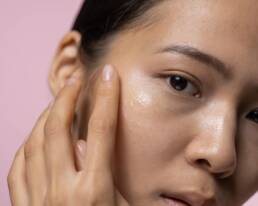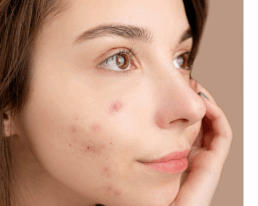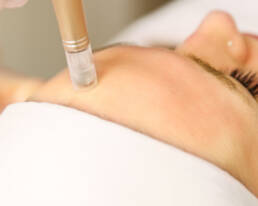Dorsa Skincare
At Dorsa Skincare, we believe that caring for your skin starts with understanding it. Whether you’re dealing with flaky patches, dullness, or tightness, knowing the root cause of your skin concerns is key to choosing the right products and routines. One of the most common—and confusing—issues our clients face is the difference between dry skin and dehydrated skin. They may look and feel similar, but they’re not the same. In this post, we’ll break down the key differences between the two, help you identify which one you’re dealing with, and share solutions that align with Dorsa Skincare’s philosophy of results-driven, nourishing care.
Understanding the Basics
Before we dive into the details, let’s define the terms clearly:
- Dry skin is a skin type—something you’re generally born with or that develops over time. It’s characterized by a lack of oil or sebum production.
- Dehydrated skin is a skin condition, which means it’s often temporary and triggered by lifestyle, environment, or skincare habits. It involves a lack of water in the skin.
In short: dry skin lacks oil, while dehydrated skin lacks water. And yes, your skin can be both at the same time.
Signs of Dry Skin
If you have dry skin, you might notice:
- Flakiness or peeling
- A rough texture
- Dullness
- Small or invisible pores
- Frequent irritation or sensitivity
- Fine lines that are more pronounced
Dry skin tends to persist over time and may worsen in winter or as you age, when natural oil production decreases.
Signs of Dehydrated Skin
Dehydrated skin, on the other hand, may show up as:
- Tightness, especially after cleansing
- Dullness and uneven tone
- More prominent dark circles or under-eye shadows
- Fine lines that appear suddenly
- Redness or a feeling of “overheating” even if your skin isn’t oily
- Oily patches paired with dryness in other areas (yes, you can be both oily and dehydrated)
This condition can be brought on by factors like:
- Cold or dry weather
- Over-cleansing or using harsh exfoliants
- Not drinking enough water
- High caffeine or alcohol intake
- Air travel or poor sleep
Why the Difference Matters
Treating dehydrated skin as if it’s dry (i.e., loading it up with oils) can make things worse. Likewise, treating dry skin like it’s dehydrated (using only water-based hydrators) may not be enough to nourish your skin barrier.
That’s why it’s so important to tailor your skincare routine to your skin’s actual needs—especially if you want long-term results.
How to Treat Dry Skin
If you’ve determined you have dry skin, your goal should be to nourish and protect the skin barrier by replenishing oils and reducing trans-epidermal water loss (TEWL).
Recommended steps:
- Use a gentle, creamy cleanser.
Harsh cleansers strip the skin of natural oils. Opt for a non-foaming formula that leaves your skin feeling soft—not tight. - Apply a nourishing serum or facial oil.
Look for ingredients like squalane, jojoba oil, or rosehip oil, which mimic the skin’s natural oils and help reinforce your barrier. - Moisturize with rich emollients.
Choose moisturizers with ingredients like ceramides, shea butter, or fatty acids to lock in hydration. - Protect your skin from environmental stress.
Wear SPF daily, even in the winter, and avoid long hot showers or exposure to dry air without protection. - Avoid over-exfoliation.
Stick to gentle exfoliation once a week, and always follow with a moisturizer.
How to Treat Dehydrated Skin
If your skin is dehydrated, the focus should be on replenishing moisture and enhancing water retention in the skin.
Recommended steps:
- Hydrate from within.
Start by drinking more water and limiting caffeine and alcohol. Internal hydration supports external balance. - Use a humectant-based serum.
Ingredients like hyaluronic acid, glycerin, and aloe vera attract and bind water to the skin. - Seal it in with an occlusive moisturizer.
Once you’ve applied hydrating serums, top them with a cream that prevents water loss. - Mist strategically.
Hydrating face mists can be helpful, especially in dry environments—but always follow with moisturizer to lock it in. - Avoid alcohol-heavy products.
Some toners and acne treatments contain drying alcohols that can worsen dehydration.
Can You Have Both?
Absolutely. In fact, it’s common to have dry and dehydrated skin, especially if your barrier is compromised. You’ll need to:
- Layer a hydrating serum (for water) under
- A moisturizer or facial oil (for oil and protection)
This layering technique ensures your skin gets what it needs—both water and lipids.
Understanding your skin is the first step to improving it. Whether you’re dealing with chronic dryness or temporary dehydration, the key is a thoughtful, layered routine that prioritizes skin health over trends. At Dorsa Skincare, we customize our facials to work in harmony with your skin. Start by identifying your skin’s needs, and then nourish it with products that replenish, protect, and support.

Ready for an expert opinion? Set up a consultation.
Experience expert skincare treatments in Denver, CO with Dorsa Skincare — where beauty, confidence, and expert care come together. Contact us today for personalized solutions perfectly tailored to your unique skincare needs.
Like this article? Spread the word!
Related Posts
May 15, 2025
What Causes Acne? 5 Sneaky Skin Saboteurs You Might Be Overlooking
Think you’re doing everything right but still breaking out? Acne isn’t always caused by…
May 8, 2025
Post-Workout Skincare Routine
Sweaty workouts are great for your body—but not always for your skin. Learn how to care…
August 16, 2023
How Does Medical Microneedling Work?
Discover how medical microneedling works and rejuvenates skin. Explore the science behind…





